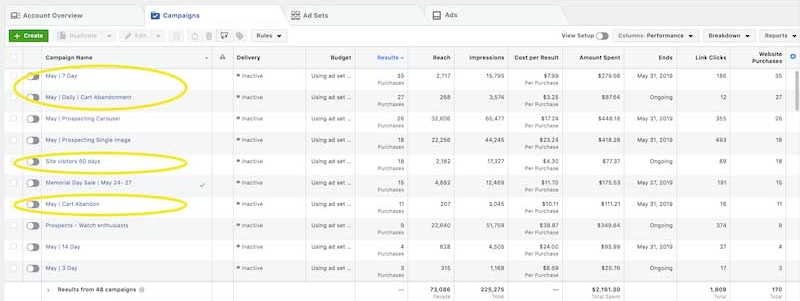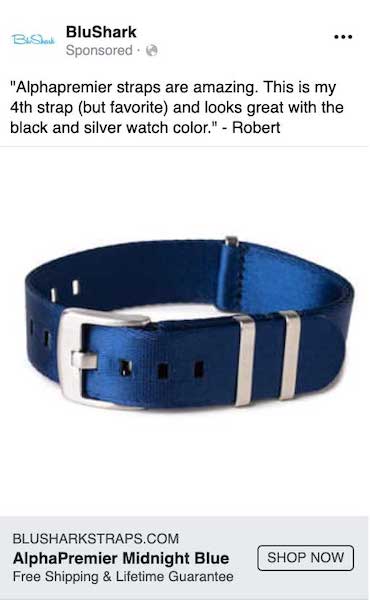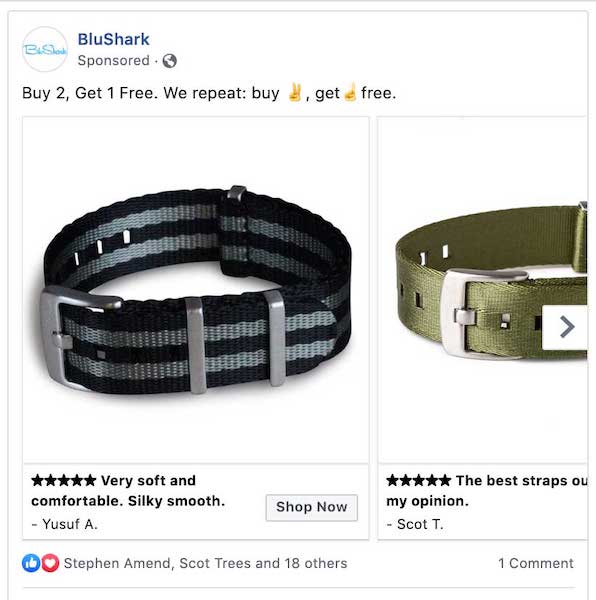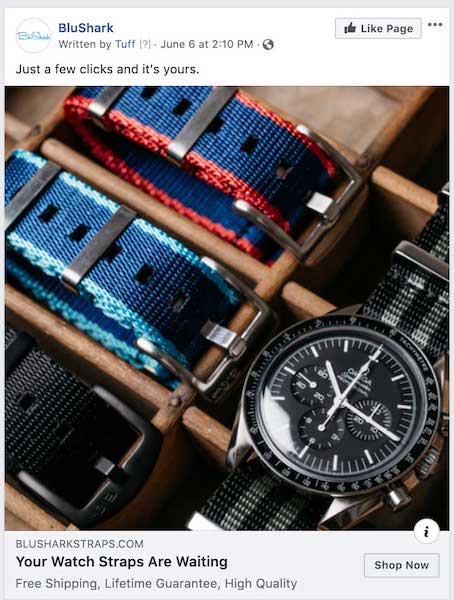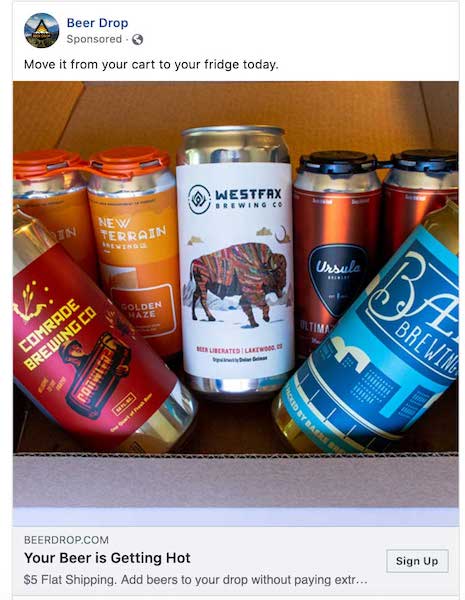Inside Look: How We Use ECommerce Retargeting to Increase Sales
We’ve all had this experience:
You’re scrolling your Facebook feed or reading an article, only to spot an ad for a website you recently visited. It may be a site you checked out briefly, or you may have gone so far as to put items in your shopping cart before changing your mind about pulling the trigger.
Either way, that company tracked your engagement with them, and they’re now using eCommerce retargeting campaigns to serve you ads to stimulate further interaction and, ultimately, turn you into a lead, sale, or client.
Annoying? Sometimes.
Effective? Yes.
Retargeting is one of the most powerful and effective paid acquisition strategies you can use to drive sales. It also happens to be a strategy most of our clients are curious about.
It’s not uncommon for 95% or more of your site’s visitors to leave without making a purchase.
Ensuring they visit your site more than once is essential if you hope to have any chance of converting them. Retargeting is a direct and purposeful way to increase the chances of someone coming back to your online store.
We’re often asked: How are brands and businesses succeeding with retargeting today? And how do we leverage retargeting to increase ROAS and drive more sales for our online store?
We optimize retargeting campaigns every day and are eager to share what’s working on Facebook and Instagram.
Let’s dive in.
How does eCommerce retargeting work?
The most common type of retargeting ad is pixel-based. This means that when someone visits your site and checks out a page, a bit of JavaScript called a pixel is left in their browser.
This makes their browser “cookied” and allows you to target your advertising to their movements on your site. This type of retargeting can be done immediately upon the user leaving your site and will be ultra-tailored to the content or product they were viewing.
You can also approach retargeting in a list-based fashion, meaning that you can create ads targeted to specific lists of customers for which you already have contact information.
This can be a more customized way to approach retargeting since it considers more than just one instance of customer behavior and allows you to cultivate a particular audience more thoughtfully.
Is retargeting right for my business?
Once you’re regularly clocking 1,000+ monthly visitors to your site, retargeting is a no brainer. It should be a core part of your eCommerce Facebook ad strategy.
It also tends to work best when approached proactively, rather than implemented as a reaction to falling traffic or poor conversion rates. For example, when you build a prospecting campaign to draw in new potential customers, you should already have plans in place to redirect that audience to your site via retargeting ads.
Retargeting has a significant ROAS (an underutilized metric that you should be paying attention to) and, if planned in advance with your initial campaign, can net you 20% more new customers without too much added cost.
Retargeting is an especially useful tool for brands with a multitude of products, as it allows you to tailor ad content to very specific customer segments.
Say you’re a shoe company that sells footwear for a wide variety of athletes. You would set up individual retargeting campaigns for runners, tennis players, basketball players, and more, guaranteeing that the ad content is highly personalized and relevant to the consumer viewing it.
What results can I expect with retargeting?
If you’re wondering if retargeting is really that effective, it might help to see some hard numbers.
In May, Tuff spent $2,161.30 on Facebook for a client of ours. Thirty-five percent of that spend was allocated to retargeting campaigns.
From the retargeting ads specifically, we generated and completed 98 sales for a total sales figure of $2,450. That’s a 362% ROI.
A big part of why retargeting is so effective is that it speaks more directly to potential customers.
When you’re advertising to a totally new audience, your ultimate goal is to spark interest in your brand. With retargeting, you already know the customer is interested, which means your copy and creative can be more specific and personalized to their exact interests.
For this client, we launched their eCommerce retargeting campaigns by driving quality traffic to the site and then retargeting users to bring them back to the product purchase page they had previously visited. Our goal with these ads was to enable people to click on the ad and be taken directly to the next step in the sales funnel.
Every industry is different but here are three main types of retargeting ads, at a minimum, we recommend running:
3-Day Retarget
This can be an opportunity to squash any hesitation they had from making the purchase the first time they were on your site. Maybe the timing was wrong, they were in the middle of something, or maybe they need the social proof of a testimonial to push them to convert.
7-Day Retarget
This is a good time to introduce any special offers you might already have running. You don’t necessarily need to create them for retargeting ads but highlight them to help encourage this purchase.
Cart Abandoners
This is an exciting group. They got so far as to select items and add them to their cart so you know they’re interested. A cart abandoner ad is hopefully the final reminder and push they need to commit.
How is retargeting different from traditional Facebook ads?
While retargeting is an essential piece of any eCommerce ppc strategy, you cannot approach it in the same way as traditional ads. There are two key things you must remember when you’re attempting to develop a plan for retargeting.
1. It requires a dedicated strategy.
As tempted as you may be to make your retargeting efforts match up with the rest of your eCommerce Facebook ad strategy for the sake of ease, don’t do it. Retargeting is a very unique type of paid advertising, and it deserves its own individualized plan.
Retargeting ads can become incredibly obnoxious to potential customers, so you have to walk a fine line. You want to be present as they navigate around the web, but you don’t want them to see the ad so much they start to loathe your brand. Oversaturation is a real concern here.
You also want the design, copy, and landing page to be just right. Avoid the type of design and copy that scream “marketing blitz.”
Use this opportunity to tailor the ad to the exact product or page the customer visited on your site. Make the copy fun, quirky, and compelling. Give them a reason to revisit, and make sure the ad sends them to the right place when they do.
Here’s one of our favorite retargeting ads from this year that demonstrates how creative you can get with copy:
2. It should be tested and tested and tested.
The name of the game with retargeting is continuous optimization. The longer your retargeting ad runs, the more familiar people become with your brand.
If you’re on a tight budget, identify which testing elements have the highest ROI before you start tweaking things. We normally recommend a focus on the following elements:
- Ad visual
- Ad copy (especially the headline)
- Ad delivery objectives
Here is how this looks when applied in a real campaign. For the below example, all we wanted to test was the image. The headline, text, and description are all the same. The image on the right received 2x more clicks for $0.10 less than the image on the left.
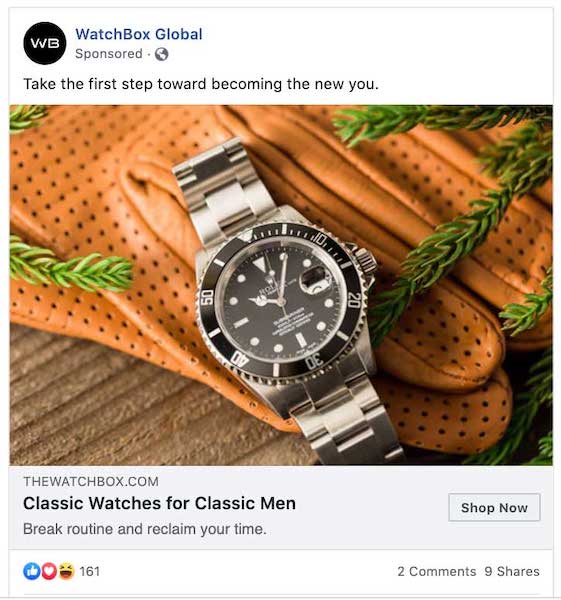
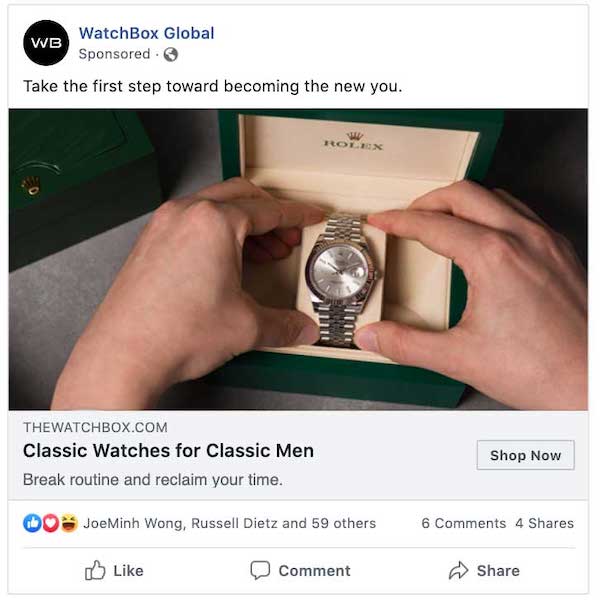
How do I get started?
If you’ve not integrated retargeting into your marketing strategy yet, let’s do it. It is hands-down one of the most cost-effective ways to increase your online sales. It’s also easy to get started, even if you haven’t done much paid advertising in the past.
If you’re interested in learning more about retargeting and other tools that can help you increase customer conversion, schedule a free growth strategy session with our team. We’ll learn more about your growth goals and help you think through ideas for growing your business.
We’d love to work with you.
Schedule a call with our team and we’ll analyze your marketing, product, metrics, and business. Then, present a Growth Plan with actionable strategies to find and keep more engaged customers.
[/av_one_full]

Ellen is the founder at Tuff and one of the team’s core growth marketers. She is a versatile marketer with expertise in multiple channels – from ppc to seo to email to others – responsible for the experiments and testing. She is happiest when she’s on the ski hill or outside pointing her mountain bike downhill.

